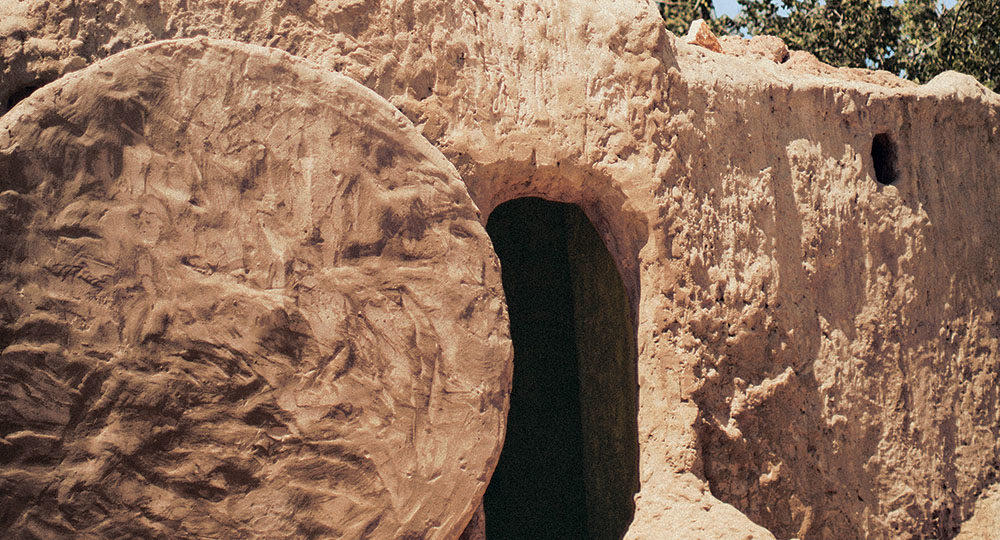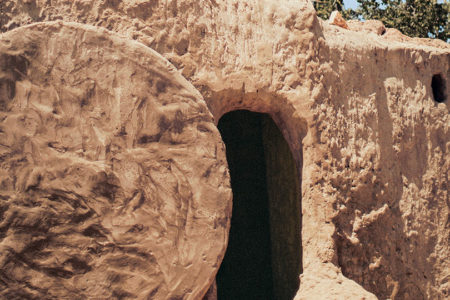Why We Believe
A look at the resurrection of Jesus Christ from the dead and why it’s a nonnegotiable fact.
Every year Christians pause to remember an event that changed history. Whether you call it Easter or Resurrection Sunday, it is a day of rejoicing, when we gather together in churches around the world to sing hymns and retell the amazing account of the Lord Jesus’ victory over the grave.
Christians have been celebrating Resurrection Day since the empty tomb was first discovered. The good news that Jesus Christ physically rose from the dead powerfully rocked the first-century world. Today the truth of that event is important not only to the 2.18 billion self-identified Christians (who account for almost one third of the earth’s population), but also to skeptics who struggle with this central tenet of Christianity.
Why do Christians believe Jesus literally and bodily rose from the grave? The answer to this crucial question can be found by scrutinizing the firsthand testimony of those who experienced the event as recorded in the New Testament.
Mary Magdalene was the first to notify Jesus’ disciples of the empty tomb she had discovered earlier in the morning. At the tomb—alone, distraught and weeping—she took a closer look. Studying the interior, she noticed two angels sitting at either end of the rock-hewn body-bench.
Although she heard them ask why she was weeping, the significance of their presence escaped her. Distracted, she answered, “They have taken away my Lord, and I do not know where they have laid Him” (Jn. 20:13).
Without waiting for a reply, she turned to leave and came face-to-face with Jesus—but failed to recognize Him. In response to His questions (“Why are you weeping? Whom are you seeking?”), she implored, “Sir, if You have carried Him away, tell me where You have laid Him, and I will take Him away” (v. 15). Then He spoke her name, and she immediately recognized Him.
In a split second, her acute grief turned to unbounded joy. She grabbed Him and would not let Him go (v. 17). In that moment, Mary Magdalene became the first person to experience the reality that Jesus had indeed risen from the dead. She heard His voice. She saw His face. She touched His glorified body. He was alive.
Mary was not the only one to see Jesus after His resurrection. Later that day, He appeared to people who were walking home from Jerusalem. One was Cleopas; the other may have been his wife, Mary (Lk. 24:18; Jn. 19:25).
As Jesus communed with these disheartened followers of His on their way to Emmaus, He decided not to reveal Himself until He reminded them of the witness of Moses and the prophets. He knew they would not understand His death, burial, and resurrection until they understood what the Scriptures revealed about the Messiah.
As they walked, they listened as “He expounded to them in all the Scriptures the things concerning Himself” (Lk. 24:27). This was not a vision or transcendental experience. The risen Jesus was alive and walking with them.
Arriving at the town of Emmaus, they begged the “stranger” to stay with them in their home. After accepting their invitation, Jesus joined them for the evening meal. “He took bread, blessed and broke it, and gave it to them. Then their eyes were opened and they knew Him” (vv. 30–31). Without waiting, they returned to Jerusalem to tell the disciples.
Later that evening, Jesus was seen by 10 disciples who were hiding from the authorities. Despite the fact that the doors were locked, He suddenly appeared in the room with them (Jn. 20:19). He showed them the scars on His hands, feet, and side and ate broiled fish and a piece of honeycomb in their presence to demonstrate He was not a mere apparition (Lk. 24:42; Jn. 20:20).
Eight days later, Jesus appeared again and challenged Thomas (who had been absent when Jesus appeared in the locked room) to feel His wounds, verifying He was alive (Jn. 20:27).
The next time the disciples saw Him, they were in Galilee after a night of fishing. Jesus had built a fire; and when they came ashore, He cooked breakfast for them with a few of the fish they had caught (21:9–14). This thorough account includes a series of detailed dialogues between Jesus and His disciples, quashing any possibility that this was anything but a genuine report.
When the apostle Paul recounted the events surrounding the resurrection, he reminded his readers, “He [Jesus] was seen by over five hundred brethren at once” and that Jesus had also appeared to James, Jesus’ skeptical brother who subsequently believed and ultimately penned the profoundly practical Epistle of James (1 Cor. 15:6–7). James later became the head of the church in Jerusalem.
The resurrection was not an ethereal or spiritual event. Jesus rose physically and bodily from the dead, and the facts are available for the world to see:
- He was crucified in Jerusalem.
- He was placed in a tomb in Jerusalem that was guarded by the Roman military.
- Three days later, the tomb was empty.
- He appeared in His resurrection body to the disciples and large groups of people in the environs of Jerusalem numerous times for 40 days after His resurrection (Acts 1:3).
- The disciples began proclaiming His resurrection in Jerusalem.
On Pentecost (Shavuot), 50 days from the Feast of First Fruits when Christ rose from the dead, 3,000 believed in the resurrected Messiah after the apostle Peter preached in Jerusalem.
The book of Acts teaches, “The number of the disciples multiplied greatly in Jerusalem, and a great many of the priests were obedient to the faith” (6:7). The evidence showing Jesus physically rose from the dead was so compelling they were convinced, and they believed.
Paul, who initially rejected the resurrection and vigorously persecuted Christians, ultimately placed his faith in the resurrected Christ.
The resurrection of Jesus Christ from the dead is a nonnegotiable, foundational tenet of Christianity. The historical record is available for investigation. The evidence provided in eyewitness testimonies documents the facts.
Merely knowing the facts, however, is not enough. The apostle John’s account concludes with the statement, “These are written that you may believe that Jesus is the Christ, the Son of God, and that believing you may have life in His name” (Jn. 20:31).
As we prepare to celebrate Resurrection Day on March 27, we should give thanks to God that Christ’s resurrection is not only fact but also the assurance that those who have placed their faith in Him will “dwell in the house of the Lord forever” (Ps. 23:6).








